How to Maintain Your Rollator Walker for Maximum Safety?
Apr 15, 2025
If you rely on a rollator walker to help you stay steady on your feet, then you already know how important it is to keep it in top shape. Whether you’re using a rollator walker with seat, an upright rollator walker, or any other type of walker with seat and wheels, regular maintenance is key to keeping it safe and smooth.
These walkers are built to support you through daily activities, from short strolls around the house to longer outings at the grocery store. But like anything that gets a lot of use, your walker needs a little TLC from time to time. Not sure where to start? Don’t worry - we’ve got your back.
Here’s how to maintain your rollator walker like a pro (without needing to be one).
1. Do a Quick Check Before Every Use
This might sound like overkill, but it only takes a minute. Before you head out, give your walker a quick once-over. Check that the brakes are working, the wheels aren’t wobbly, and nothing feels loose or shaky. If something feels off, don’t ignore it—better to deal with a small issue now than a big one later.
What to check:
(1) Are the brakes gripping the wheels?
(2) Do the wheels roll smoothly?
(3) Any unusual noises?
(4) Are the handles still tight?
Think of it like a quick safety scan. It’s fast, easy, and could prevent a nasty fall.

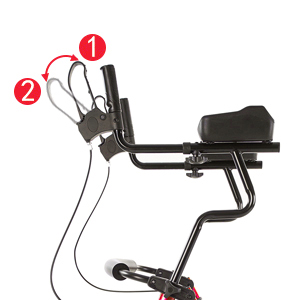
HFK-9236 ELENKER Upright Rollator Walker and its Loop Hand Brakes (Ergonomic handles are easy to grip, 1.pull up to slow 2.push down to lock.)
2. Clean Off Dirt and Debris Regularly
You don’t need to scrub your walker like it’s going on display, but keeping it clean helps prevent grime from messing with the moving parts. A damp cloth and some mild soap go a long way.
Pay extra attention to:
(1) The wheels (especially if you go outside often)
(2) Brake cables
(3) Joints and folding mechanisms
If you’ve got an upright walker with seat, check underneath the seat too—dust and crumbs love to hide there. And don’t forget your storage pouch or basket if you’ve got one. A quick clean helps everything last longer and work better.
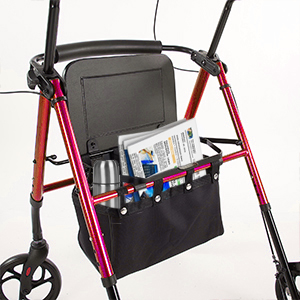
HFK-9236 ELENKER Upright Rollator Walker and its large capacity basket (The storage basket is under the seat, convenient to go shopping and carry daily items)
3. Keep the Wheels Rolling Smoothly
Wheels are the MVPs of your walker with seat and wheels, so take care of them! If they start to squeak, wobble, or drag, it’s time for some attention.
Here’s what to do:
(1) Wipe down the wheels with a damp cloth.
(2) Remove any hair, string, or dirt that’s caught in the axles.
(3) If your wheels are squeaky, a tiny bit of silicone spray or WD-40 on the axle (not the rubber part!) can help.
And if the wheels look worn down or uneven? It might be time to replace them. Most walkers for seniors let you swap out wheels pretty easily.
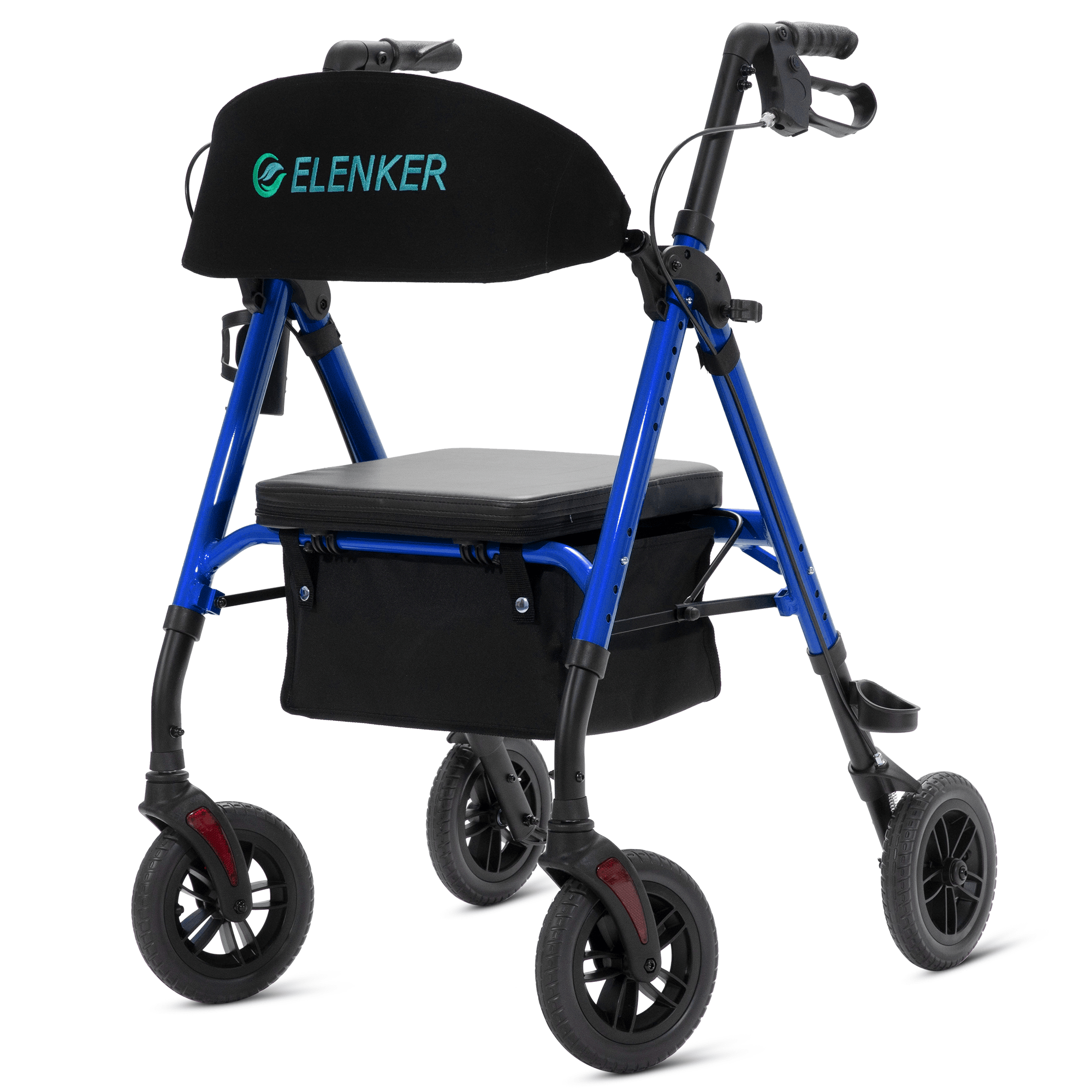
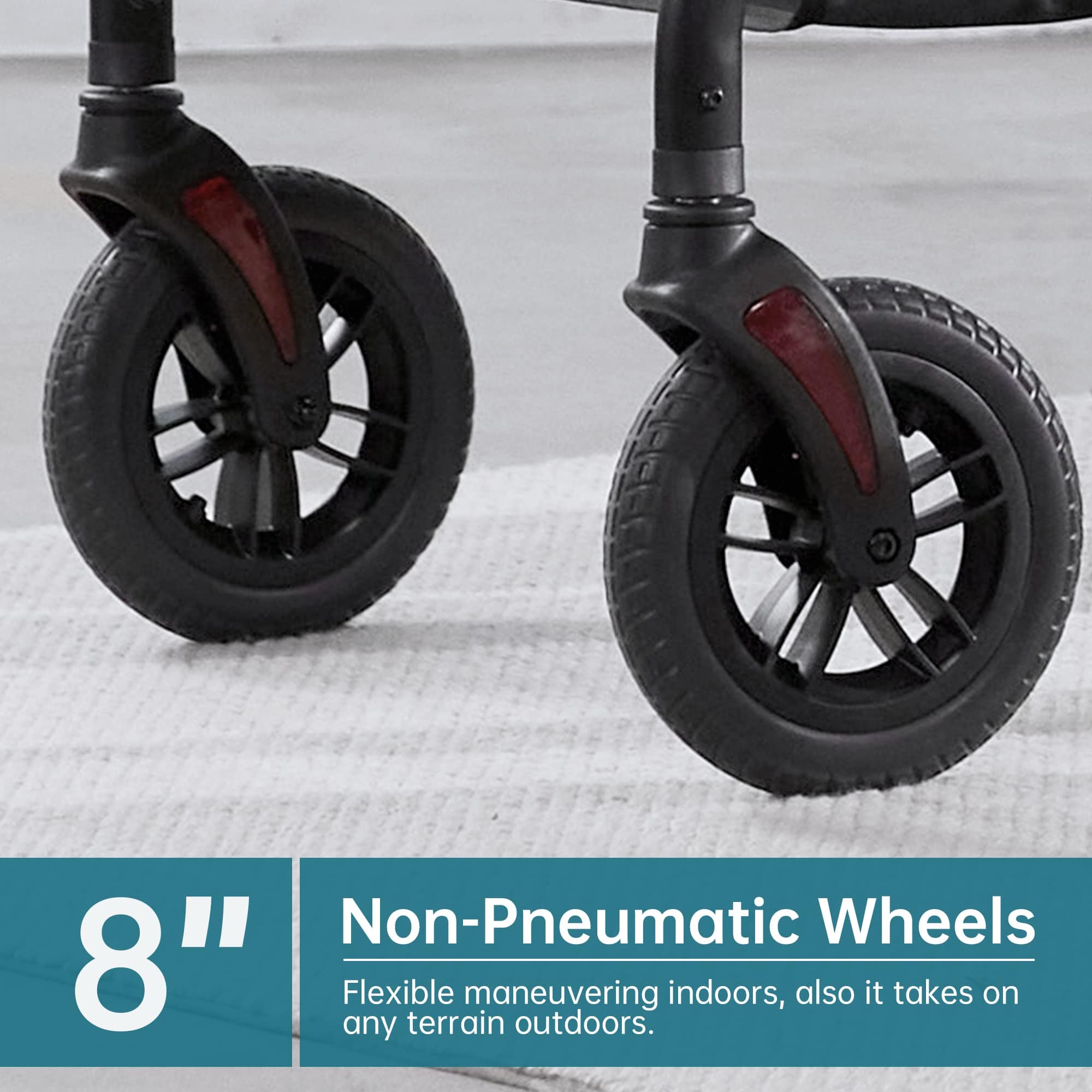
ELENKER® KLD-9218 All-Terrain Rollator Walker
4. Check and Adjust the Brakes
Brakes are probably the most important safety feature on any upright rollator walker. If they’re too loose, you could end up rolling when you don’t want to. Too tight? They might drag and make walking harder than it should be.
To test them:
(1) Engage the brakes and try to push the walker. It should stay put.
(2) If it rolls, your brakes might need tightening.
(3) If you hear a grinding noise when walking, they might be too tight.
Some walkers have a brake adjustment knob or screw near the handle. If not, check the user manual or contact the manufacturer. If you’re unsure how to adjust the brakes yourself, a local medical supply shop or mobility expert can help.
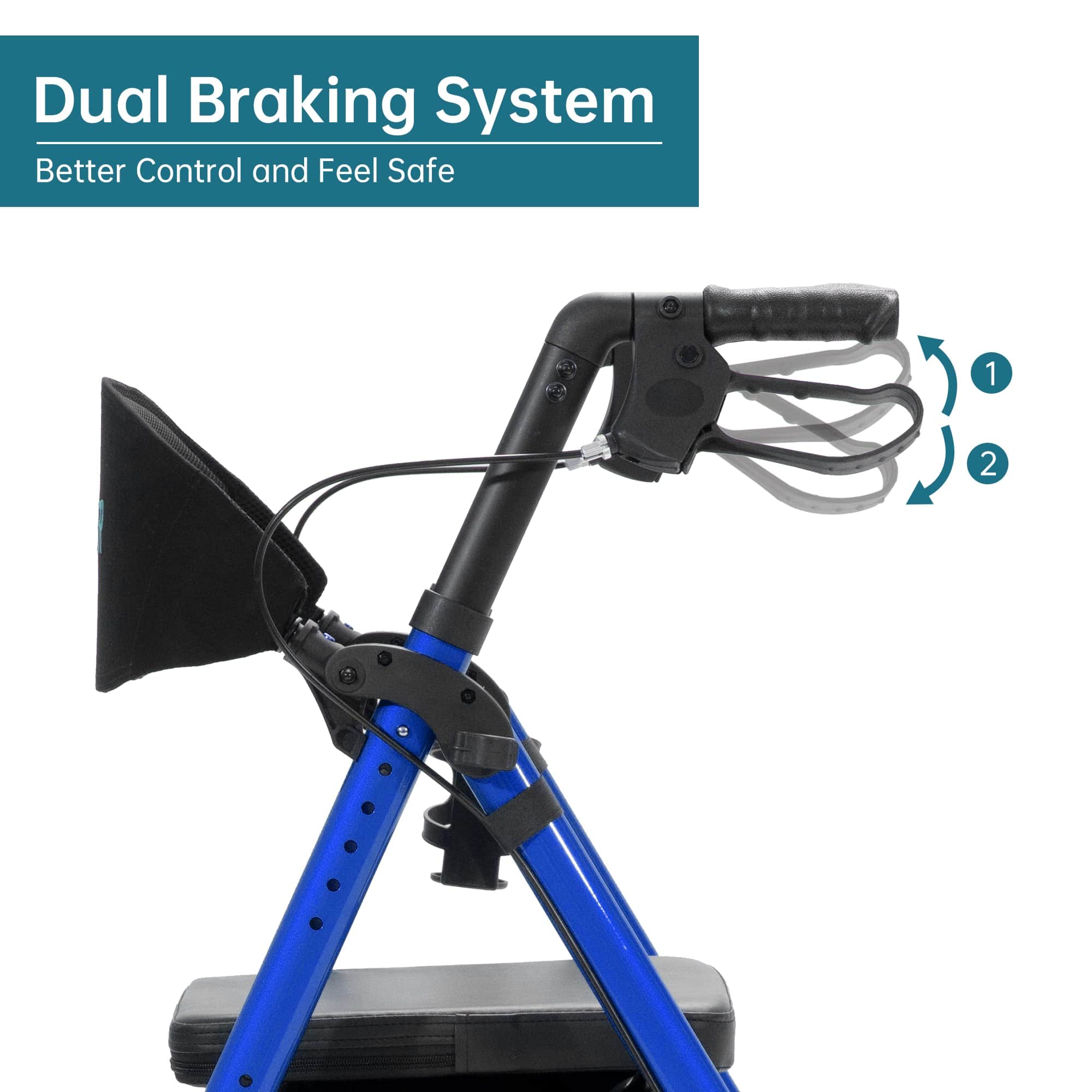
ELENKER® KLD-9218 All-Terrain Rollator Walker with dual braking system
5. Tighten Screws and Bolts
As you walk, sit, and fold your walker, screws and bolts can loosen over time. No big deal—unless they fall out or cause a part to wiggle dangerously.
Every couple of weeks, do a quick check:
(1) Grab a screwdriver or Allen wrench.
(2) Tighten any loose bolts around the frame, handles, or seat.
(3) If something’s missing or stripped, replace it before using the walker again.
A wobbly frame can be a serious safety issue, so don’t let those little parts slide.
6. Inspect the Seat and Backrest
If you’re using a rollator walker with seat, that seat needs to support your weight comfortably and safely. Look for rips, cracks, or signs of wear.
Things to look for:
(1) Is the seat cushion still firm?
(2) Any wobble or sagging?
(3) Are the bolts attaching the seat tight?
Also, check the backrest or strap (if you have one). It should be snug and not fraying. You don’t want any surprises when you’re ready to take a break.
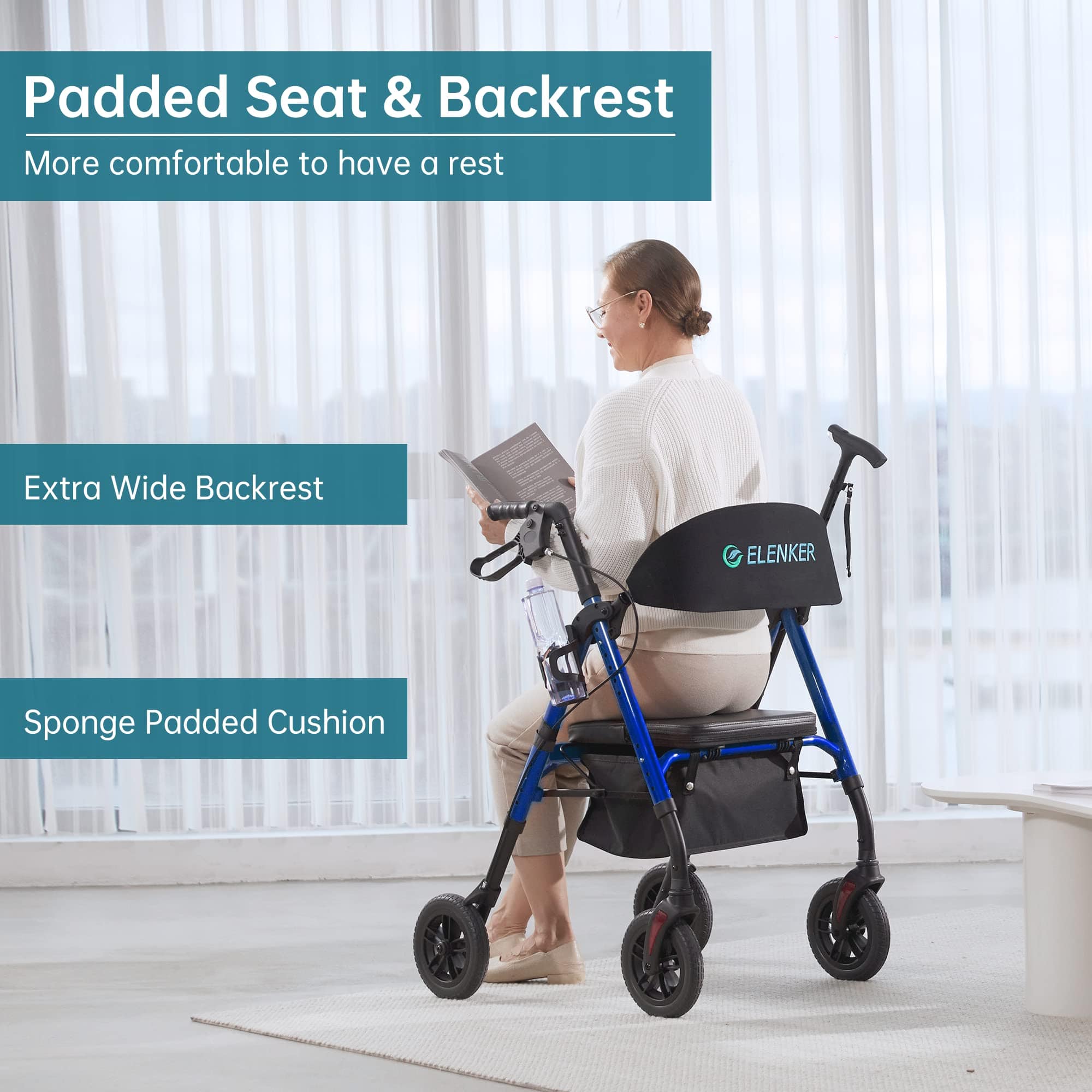
ELENKER® KLD-9218 All-Terrain Rollator Walker with padded seat & backrest
7. Store It the Right Way
When you’re not using your walker, storing it properly can make a big difference. Keep it in a dry place where it won’t get bumped around or exposed to moisture. Wet conditions can lead to rust or mold, especially on soft materials like the seat or hand grips.
If you fold your walker for storage, don’t pile heavy things on top of it—it could bend or damage parts over time.
8. Don’t Ignore Warning Signs
If your walker starts doing something weird—like pulling to one side, shaking, or making new noises - don’t shrug it off. That’s your cue to stop and figure out what’s wrong.
Sometimes it’s a simple fix, like tightening a screw or cleaning the wheels. Other times, it might mean a part is wearing out. And if you ever feel like your walker just isn’t safe, it might be time to replace it.
9. Know When It’s Time for a New Walker
Even the best walkers for seniors don’t last forever. If yours is rusting, bent, or constantly needing repairs, it might be safer (and cheaper in the long run) to upgrade.
Look for something that suits your needs. If you want more support and comfort, an upright walker with seat can help you stand taller and reduce back strain. If you like to rest often, stick with a walker with seat and wheels for convenience.
Taking care of your rollator walker doesn’t have to be a big chore. A few simple habits—like cleaning it, checking the brakes, and tightening bolts—can go a long way in keeping you safe and mobile.
Your walker is more than just a piece of equipment. It’s your partner in independence. Whether you’re using a classic model or the latest upright rollator walker, treat it right and it’ll keep you rolling smoothly.











